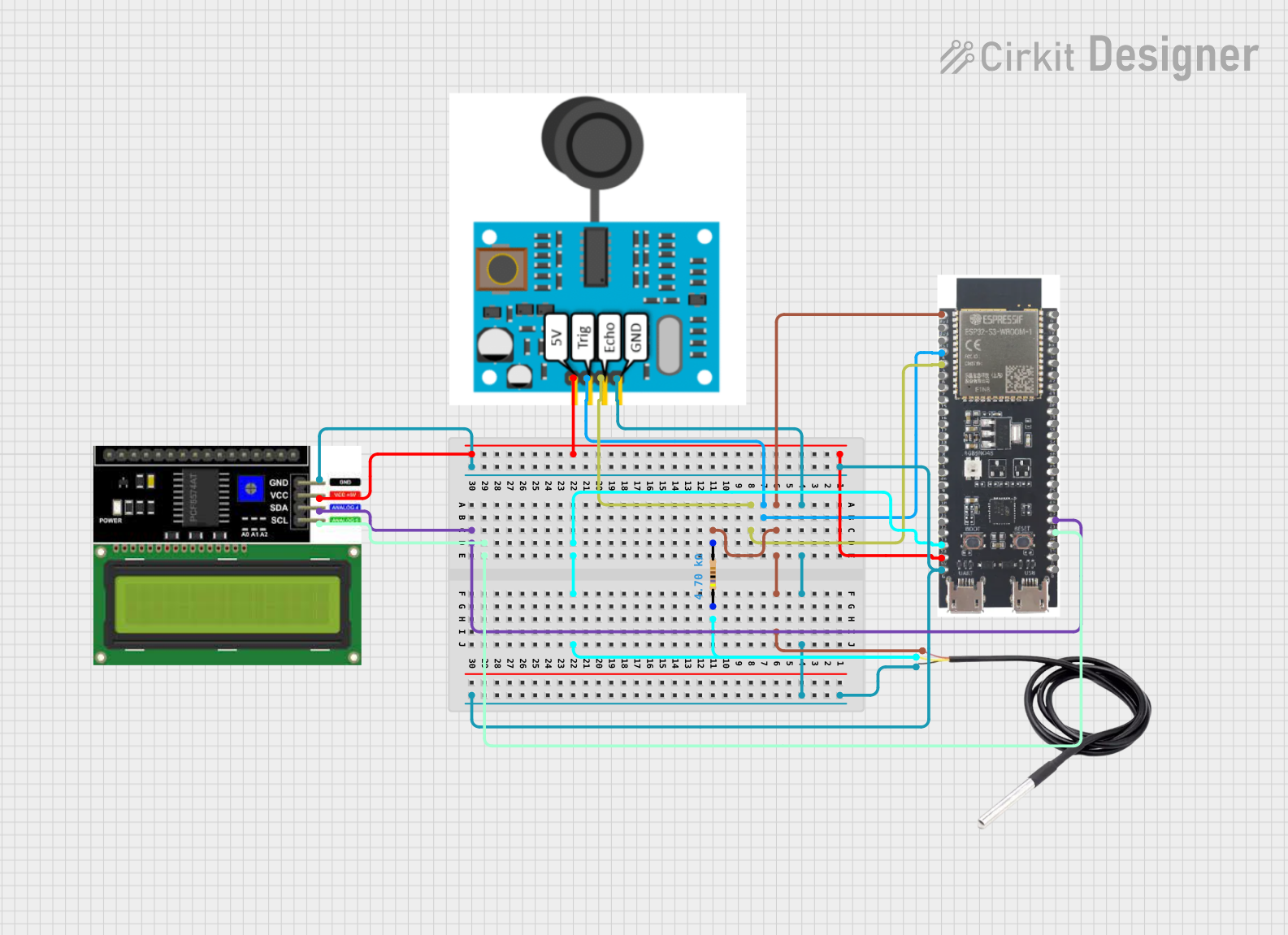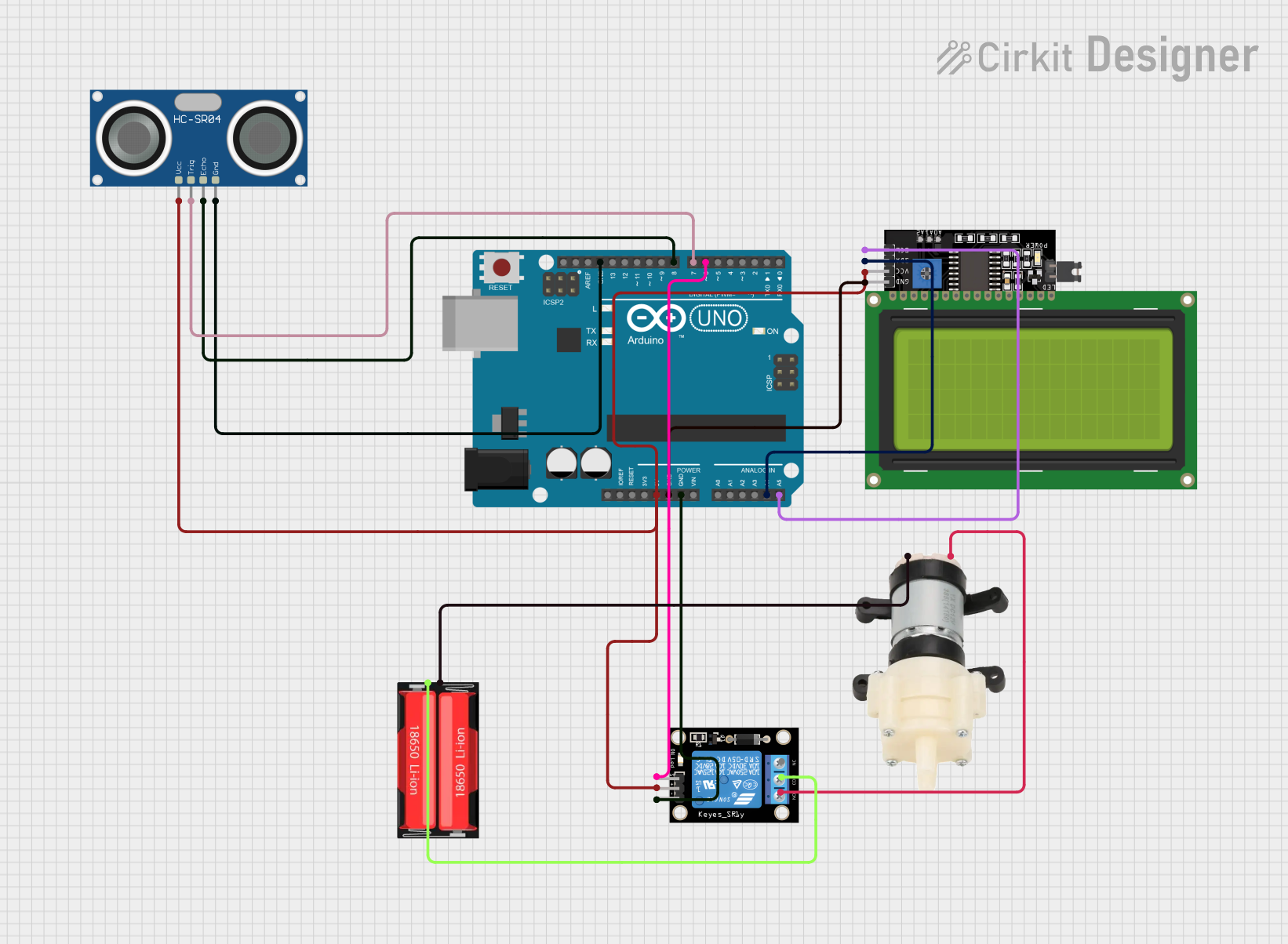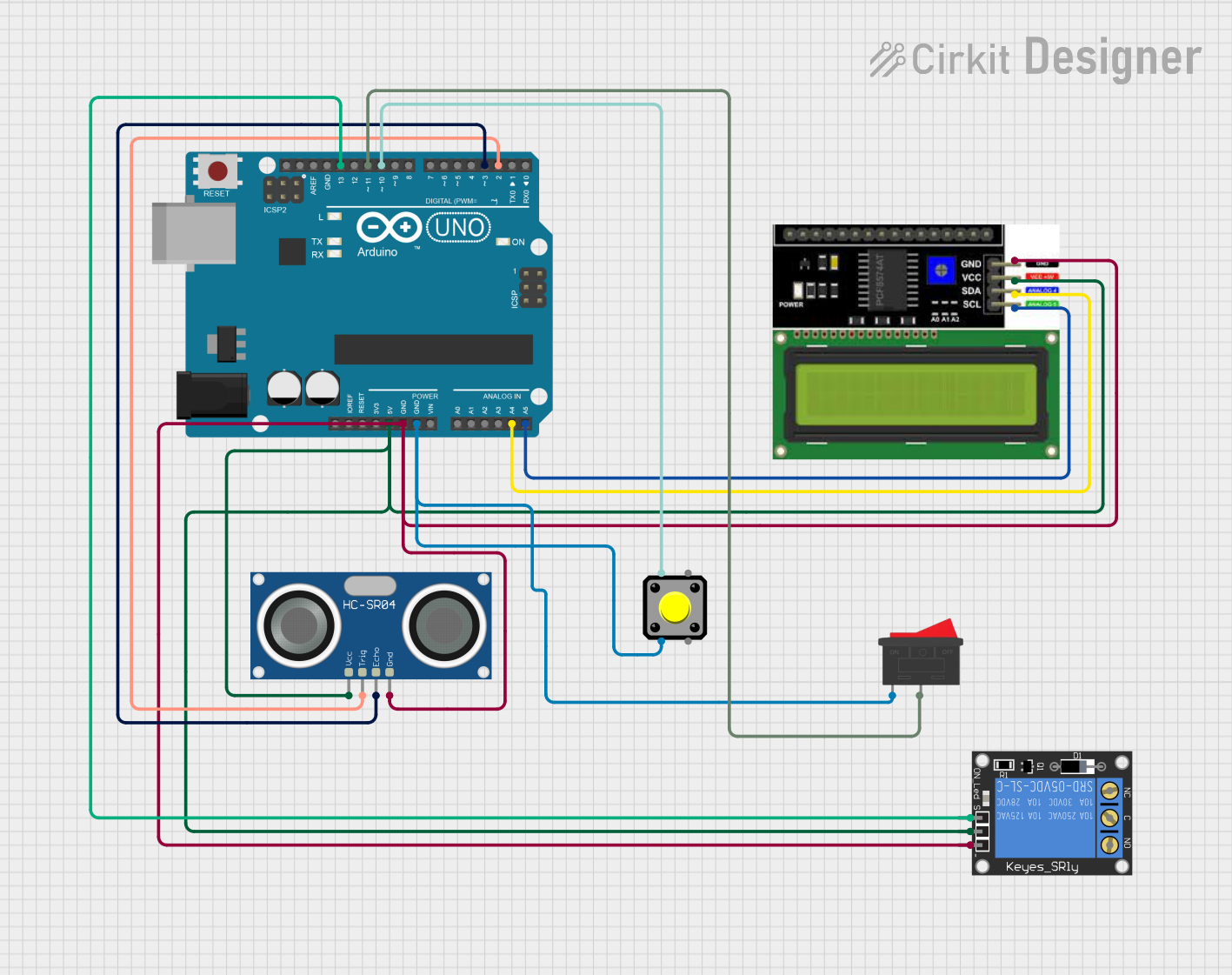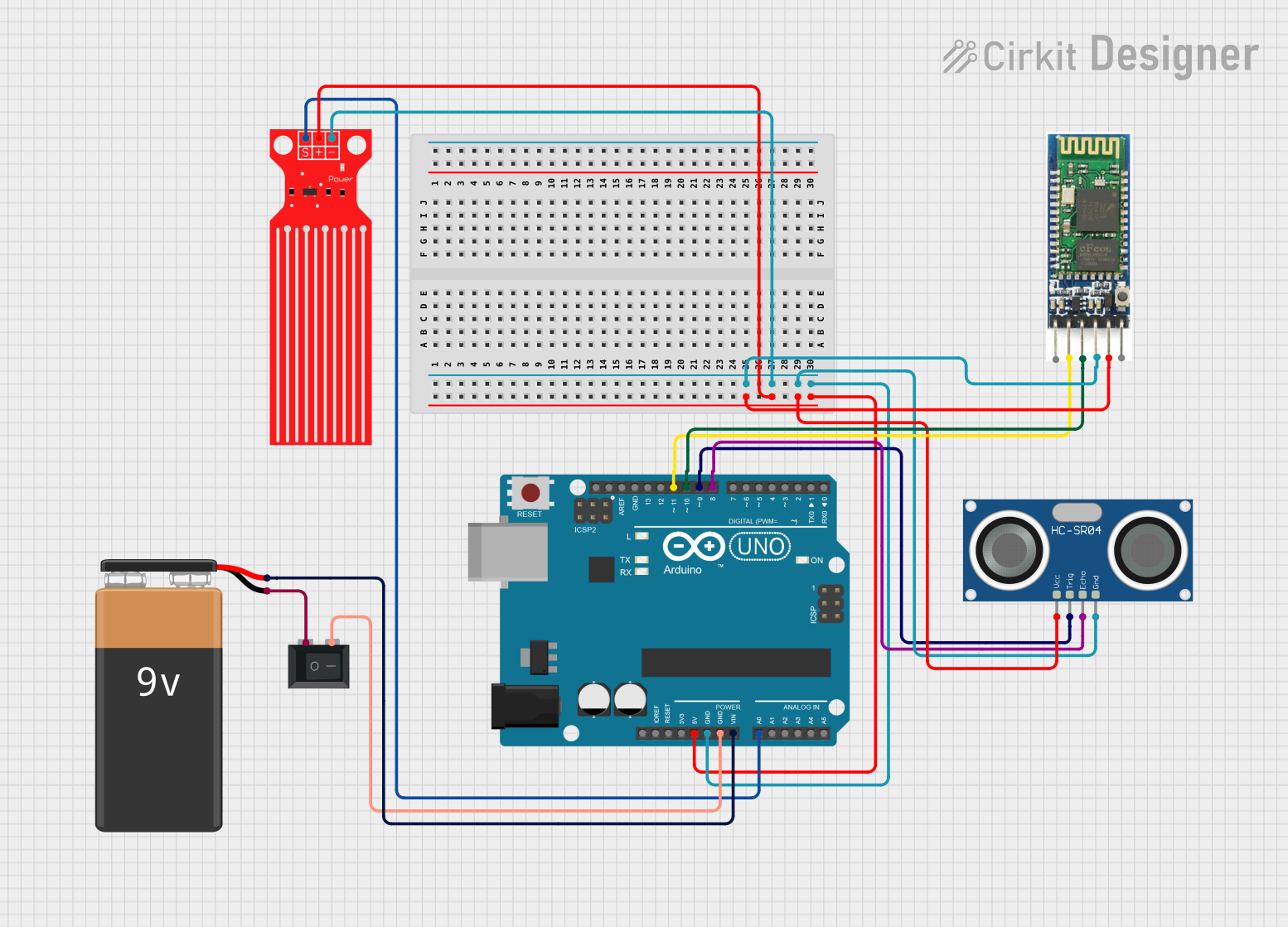
How to Use Water Level Sensor: Examples, Pinouts, and Specs

 Design with Water Level Sensor in Cirkit Designer
Design with Water Level Sensor in Cirkit DesignerIntroduction
The Water Level Sensor is a device designed to detect and measure the level of water in a tank, reservoir, or other liquid-containing systems. It is commonly used in automation systems to control water pumps, trigger alarms, or monitor water levels in real-time. This sensor is an essential component in applications such as water management systems, irrigation systems, and home automation projects.
Explore Projects Built with Water Level Sensor

 Open Project in Cirkit Designer
Open Project in Cirkit Designer
 Open Project in Cirkit Designer
Open Project in Cirkit Designer
 Open Project in Cirkit Designer
Open Project in Cirkit Designer
 Open Project in Cirkit Designer
Open Project in Cirkit DesignerExplore Projects Built with Water Level Sensor

 Open Project in Cirkit Designer
Open Project in Cirkit Designer
 Open Project in Cirkit Designer
Open Project in Cirkit Designer
 Open Project in Cirkit Designer
Open Project in Cirkit Designer
 Open Project in Cirkit Designer
Open Project in Cirkit DesignerCommon Applications and Use Cases
- Automatic water pump control in tanks
- Water level monitoring in reservoirs
- Flood detection systems
- Smart irrigation systems
- Home automation projects for water management
Technical Specifications
The Water Level Sensor typically consists of a series of conductive traces that detect water levels based on conductivity. Below are the key technical details:
| Parameter | Value |
|---|---|
| Operating Voltage | 3.3V - 5V |
| Operating Current | < 20mA |
| Output Type | Analog and Digital |
| Detection Range | 0 - 100% water level (relative) |
| Dimensions | ~65mm x 20mm |
| Interface | 3-pin (VCC, GND, Signal) |
Pin Configuration and Descriptions
| Pin Name | Description |
|---|---|
| VCC | Power supply pin. Connect to 3.3V or 5V. |
| GND | Ground pin. Connect to the ground of the circuit. |
| Signal | Output pin. Provides an analog voltage proportional to the water level or a |
| digital HIGH/LOW signal depending on the water level and threshold settings. |
Usage Instructions
How to Use the Water Level Sensor in a Circuit
Connect the Sensor:
- Connect the
VCCpin to a 3.3V or 5V power source. - Connect the
GNDpin to the ground of your circuit. - Connect the
Signalpin to an analog input pin (e.g., A0) or a digital input pin on your microcontroller.
- Connect the
Read the Output:
- For analog output, read the voltage from the
Signalpin using an analog input pin on your microcontroller. The voltage will vary based on the water level. - For digital output, the
Signalpin will output HIGH (1) when water is detected and LOW (0) when no water is detected.
- For analog output, read the voltage from the
Set Thresholds (if applicable):
- Some sensors include a potentiometer to adjust the threshold for digital output. Turn the potentiometer to set the desired water level threshold.
Important Considerations and Best Practices
- Ensure the sensor is not submerged beyond its recommended depth to avoid damage.
- Avoid using the sensor in highly corrosive or dirty water, as this may degrade its performance.
- Use proper pull-up or pull-down resistors if required by your microcontroller.
- If using the sensor in an Arduino project, ensure the analog pin is properly configured to read the signal.
Example Code for Arduino UNO
Below is an example of how to use the Water Level Sensor with an Arduino UNO:
// Define the pin connections
const int signalPin = A0; // Analog pin connected to the Signal pin of the sensor
const int ledPin = 13; // LED pin to indicate water level
void setup() {
pinMode(ledPin, OUTPUT); // Set LED pin as output
Serial.begin(9600); // Initialize serial communication
}
void loop() {
int waterLevel = analogRead(signalPin); // Read analog value from the sensor
// Print the water level to the Serial Monitor
Serial.print("Water Level: ");
Serial.println(waterLevel);
// Turn on the LED if water level exceeds a threshold
if (waterLevel > 500) { // Adjust threshold as needed
digitalWrite(ledPin, HIGH); // Turn on LED
} else {
digitalWrite(ledPin, LOW); // Turn off LED
}
delay(500); // Wait for 500ms before the next reading
}
Troubleshooting and FAQs
Common Issues and Solutions
No Output from the Sensor:
- Ensure the sensor is properly connected to the power supply and ground.
- Verify that the
Signalpin is connected to the correct input pin on the microcontroller.
Inconsistent Readings:
- Check for water contamination or debris on the sensor traces.
- Ensure the sensor is not submerged beyond its recommended depth.
Digital Output Not Triggering:
- Adjust the potentiometer (if available) to set the correct threshold.
- Verify that the microcontroller's digital input pin is configured correctly.
Sensor Corrosion:
- Avoid using the sensor in highly corrosive or dirty water.
- Consider using a protective coating or a sensor designed for harsh environments.
FAQs
Q: Can this sensor detect liquids other than water?
A: The sensor is designed for water detection and may not work reliably with non-conductive liquids like oil or distilled water.
Q: How do I clean the sensor?
A: Gently wipe the sensor with a soft, damp cloth. Avoid using abrasive materials or harsh chemicals.
Q: Can I use this sensor with a 3.3V microcontroller?
A: Yes, the sensor operates within a voltage range of 3.3V to 5V, making it compatible with 3.3V microcontrollers like the ESP32.
Q: What is the maximum depth the sensor can be submerged?
A: The sensor should not be submerged beyond the conductive traces to avoid damage. Check the manufacturer's guidelines for specific depth limits.